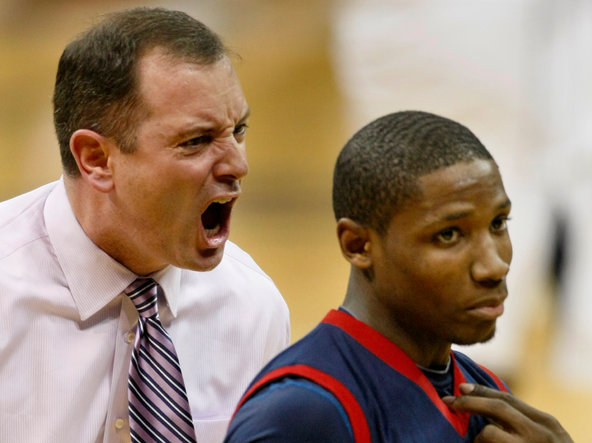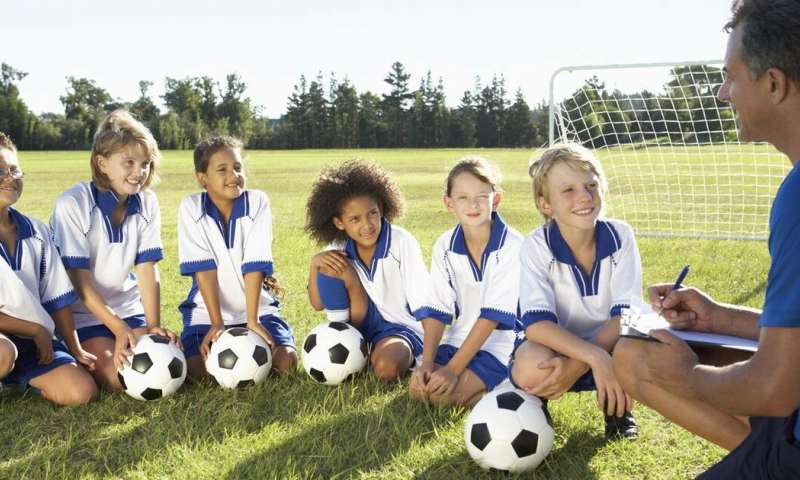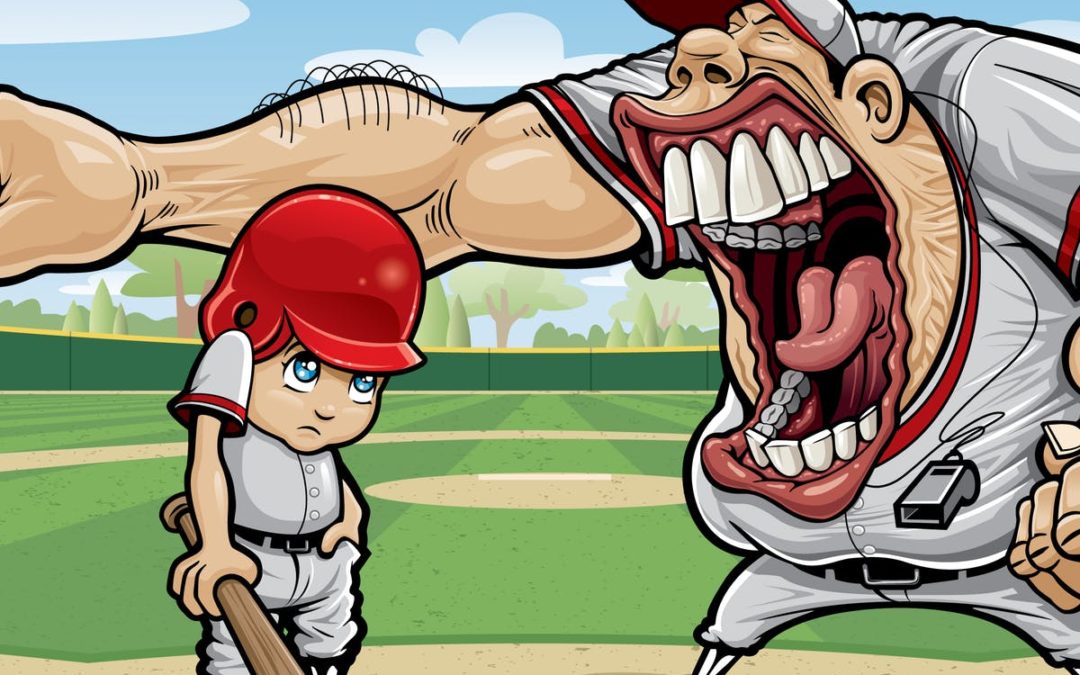Atletes, parents, and fans should not ignore anything that seems off, from feeling creeped out to serious crimes.
By ELIZABETH CAREY
Elite runner Mary Cain recently spoke out in an opinion video and related article produced and published by The New York Times describing how she was “emotionally and physically abused” during her time training with the now-dissolved Nike Oregon Project under Alberto Salazar.
Her video and the ensuing commentary, including that from former Nike Oregon Project athletes, have sparked a conversation about what behaviors the sport of running tolerates and beg the question: What, exactly, should we do if we notice abusive behavior and what should happen when misconduct is reported? The answer can have grave consequences.
Abuse needn’t be physical—like hitting, pulling hair, or forcing someone to run through injury—to do real harm. Emotional abuse is also harmful and can lead to psychological trauma, anxiety, chronic depression, or eating disorders. “While emotional abuse doesn’t always violate the law, it certainly violates the SafeSport code, endangers an athlete’s safety and well-being, and should be reported,” writes Ju’Riese Colon, CEO of U.S. Center for SafeSport, a non-profit organization founded in 2017 to provide training and misconduct investigations for national governing bodies of the U.S. Olympic and Paralympic Committee (USOPC). Emotional abuse is especially important to pay attention to because it’s part of “grooming,” a way sexual abusers target victims.

Athletes of all levels, from recreational to elites, can experience abuse including harassment. The biggest risk factor? Coaches, says Nancy Hogshead-Makar, civil rights lawyer and three-time Olympic Gold-medalist swimmer. She is also co-chair of Team Integrity, a coalition of athletes, that is advocating for bipartisan legislation that would overhaul the USOPC and increase athlete rights.
As of November 16, 69 coaches are listed as ineligible or suspended on the U.S. Center for SafeSport’s disciplinary list, which includes records from March 2017 onward and any eligibility restrictions for USA Track & Field-associated coaches, according to a spokesperson. Seventy-one were listed as suspended or ineligible on the site of running’s national governing body, USA Track & Field (or USATF, which actually oversees cross country, road racing, and other events). The disciplinary status listed is based on investigations into whether a coach, volunteer, or other official registered with USATF violated SafeSport policy. USATF did not confirm the total number of registered coaches but did say that as of October 2019, approximately 12,000 coaches, officials, and volunteers have completed SafeSport training.

What Is Abusive Coaching Behavior?
Abuse may be sexual, verbal, emotional, and/or physical. Repeated exposure to abuse is harmful to mental development, especially among kids and adolescents. It includes sexual harassment and assault and fostering toxic or sexualized environments. Sexual violence includes sexual assault, rape, and abuse—but the legal definition of these crimes varies by state and jurisdiction.
Coaching misconduct needn’t be unlawful to be damaging, hurtful, or wrong, says Katherine Starr, founder of Safe4Athletes, a non-profit that advocates for athlete welfare with policy and reporting programs. Misconduct may be defined by a sport- or club-specific policy, including the SafeSport Code or school-specific rules. Often these rules draw boundaries around hazy gray areas, including the space between illegal and, well—just wrong.
Emotional misconduct includes negative reinforcement through damaging behaviors. It may be sexist or punishing, but regardless, it causes stress that’s bad for both performance and well-being. “I see parents and athletes, all the time, being willing to put up with treatment—screaming, shaming—as long as they are coming home with a ‘W,’” says Julie McCleery, Ph.D., director of research-practice partnerships and research associate at University of Washington’s Center for Leadership in Athletics. “Emotional abuse is not okay—win or lose—because in the long term, there will be consequences of that abuse: demotivation, fear of failure, anxiety.”
A key example of emotional abuse is making appearance- and body-focused remarks. “To fat-shame someone is inappropriate. It doesn’t work. We can show the science of it. And if nothing else, it’s really bad coaching,” says Hogshead-Makar.
Physical mistreatment includes withholding water or rest, especially in extreme conditions, and ignoring or dismissing injury. Violent outbursts, whether physical such as throwing a clipboard or pinching an athlete, can also cause unnecessary stress.
This might feel overwhelming to ponder, but it comes down to trusting your gut. “It definitely is asking an awful lot of young athletes to be able to suss out what’s appropriate for a coaching context and what they might encounter…to be able to make that distinction between this is appropriate, and this is not appropriate,” says Hogshead-Makar. “I think how that makes someone feel is a good bellwether.”
These are some red flags to look out for, particularly for young athletes:
- Something feels off or wrong
- Closed-door meetings
- Digital 1:1 communication
- Controlling behavior (For example, saying “You can/not go to prom.” or “Eat this not that.”)
- Angry and/or violent outbursts
- Grooming behaviors tailored to both children and parents
- Not being able to talk to (or accurately heard by) your coach about mental or physical health
- Not being able to talk to people or support staff around your coach because they’re extremely loyal to the coach with whom you have an issue
- Your child, athlete, or teammate seems off, stressed, or as if something’s wrong; they might try to tell you something that’s hard for them to say or you to hear
What to Do If You Notice Abusive Coaching Behavior or Mistreatment
If you experience, witness, or have reasonable suspicion of crime, including sexual harassment, abuse, and assault, especially when involving a minor (under 18 years old):
- Report it to law enforcement as soon as possible, as some laws require reporting within 24 hours.
- Victims: Ask to speak with officials who work specifically with victims of assault or sexual violence, including specially-trained investigators. Seek a forensic nurse at hospitals and medical centers.
- Report immediately to the U.S. Center for SafeSport online or 720-531-0340
If you have a “reasonable suspicion” of sexual misconduct and non-consensual contact, or intimate relationships involving an imbalance of power, or other behaviors outlined in the SafeSport handbook:
- Report to SafeSport online or 720-531-0340
If you have a concern about doping:
- Report with USADA: https://www.usada.org/resources/playclean/.
If you have concerns about mistreatment, including physical or emotional misconduct, bullying, harassment, hazing, and any other violation of the USATF SafeSport Handbook:
- Report with the USATF, 317-713-4688 or safesport@usatf.org. (USATF says it will withhold a reporter’s name by request, as long as it’s lawful.)
It doesn’t matter when misconduct took place, as neither criminal nor civil statutes of limitation apply, according to the USATF. No matter what you see or hear, whether a minor tells you something their teammate said, report it. That’s the best chance of promoting athlete safety, according to the SafeSport training.
“USATF promotes a culture where athletes feel safe reporting any incident that could rise to level of abuse of any kind,” wrote Susan Hazzard, USATF managing director of communications. “If any athlete, parent, or bystander makes a report with USATF, then USATF will follow through and investigate in a consistent manner.”

Do not investigate on your own, urges SafeSport. In general, if you have any concerns, take notes and document incidents. When filing a report, provide as much information as possible, including basic details such as names, locations, and dates. If you feel comfortable, provide your contact information so investigators can follow up with you, but anonymous reports and complaints are taken.
School-based teams may have additional procedures and important point people such as athletic directors, teachers, and counselors in place. Collegiate programs include several resources, says Angelina Ramos, University of Nevada Las Vegas cross country coach. Examples include Senior Women’s Administrators, an office of Title IX, Student Athlete Advisory Committee, and mental health centers.
An athlete’s “instinct and their intuition should always be their first gauge. A leader should always make an athlete feel safe, that doesn’t mean they shouldn’t be pushed outside their athletic comfort zone; that doesn’t mean they shouldn’t be pushed to grow and evolve to their highest self as a human, as a person, as an athlete,” says Ramos. “But if they feel uncomfortable or something rubs them the wrong way, there should be open communication and an open policy that they can come talk to [the coach or another resource] about, ‘Hey, that didn’t feel right; that didn’t sound right.’”
Club-specific policies, like Safe4Athletes, offer other specific steps to take if or when you have concerns. For example, Safe4Athletes programs appoint non-coach athlete advocates.
“If you feel that something’s uncomfortable, don’t ignore it,” says Arianna Lambie, former professional runner who belonged to the Nike Oregon Project from 2008 to 2010. “Don’t go it alone. We have a tendency to try to solve our own problems.”
For objects of coaching abuse, it may feel difficult to navigate. “You’re probably in that situation for difficult-to-change reasons, whether you’ve joined that college team, or your salary depends on it, or you blame yourself, or the system seems too big,” Lambie says.
She encourages other runners to figure out what’s best for you and what that looks like for your career and long-term health. “If someone doesn’t care about your long-term health, look for another running environment,” she says.
No matter how stuck you may feel, experts, coaches, and athlete welfare organizations encourage you to speak to someone you trust or a respected resource like an anonymous helpline. Perhaps there’s a counselor, friend, teacher, parent, or doctor with whom you can share your experience. The experts interviewed encouraged peers and parents alike to listen extra diligently to your teammates and young athletes.
The Barriers to Creating a Safer Sport
As Cain and others push for reform, sources interviewed described the hurdles to weeding out and stopping abusive behavior in sports. They call for not just clear policy and regulations, but also for thorough evaluations, repercussions, and accountability.
“Professors are evaluated by every student in every course they teach. A coach is not evaluated once. They are only judged by their performance, [by] championships. Why? That’s money. Why isn’t there a metric that evaluates coaches including an athlete’s experience?” asks Lambie.
At scholastic and collegiate levels, coaches are technically accountable to athletic directors, Title IX laws, and student-athlete advocates. At the club level, oversight—let alone coaching requirements and policies—lags. At all levels, repercussions may lag, too. That’s one reason why Hogshead-Makar is pushing for increased oversight of USOPC through Congress.
Currently, there’s no single standard across-the-board certification or requirement to coach runners. For recreational runners, there are multiple nation-wide, non- and for-profit programs. When it comes to elite programs and Olympic sports, national championships, and youth programs, that’s USATF territory.
To be listed on USATF’s coaches registry, a coach must be a current member of one of USATF’s 57 associations, fulfill an education requirement (the lowest hurdle costs about $70 and requires two online courses), complete “USATF 3-Step” SafeSport training, and fulfill a background check; plus, sign on to the SafeSport handbook and a coaches code of conduct, which includes “do no harm.” Similarly, USATF officials must also be USATF 3-Step SafeSport compliant, according to Susan Hazzard, USATF managing director of communications.
One high hurdle to stopping abuse? Adults and sport-governing bodies don’t have the best track record when it comes to advocating for athletes. USA Gymnastics, for one, turned a blind eye to reports of sexual abuse in its ranks. Erin Strout, a reporter who’s covered running for a decade, expressed her concerns with USATF’s lack of transparency, especially when it comes to athletes reporting misconduct:
So, I couldn’t sleep last night despite exhaustion. And I kept thinking about how in the story I reported over the past week, the point from the experts I spoke with is that the “system failed.”https://www.womensrunning.com/2019/11/news/why-women-will-save-running_103411 …
Why Women Will Save Running
“The hard work begins now.”
womensrunning.com
A second significant hurdle for victims is fear of retaliation. The good news: Some federal laws protect against retaliation for employees and students. The bad news: It’s very complicated. Sponsored athletes, for example, are contractors—not employees. Worse yet, whistleblowing laws don’t apply to USOPC because it’s not a governmental agency, says Hogshead-Makar. That’s why SafeSport is so important. Its code explicitly prohibits retaliation, but it’s unclear what sort of remedy the Center could provide a victim of retaliation.
Rachel Sturtz, an investigative reporter who uncovered pervasive sexual abuse and cover-ups in USA Swimming, encourages athletes and parents to keep their eyes open to the persistence of sexual predators. “These people will always find their way into coaching positions. No institution, no policies can stop that because a lot of people won’t have records, or they’ve never been caught. So all you can hope is you have the policies and the education in place that when something does go wrong, it’s a swift reaction to it,” she says. What’s more, she says, that reaction needs to include consequences or actions that prevent future harm.
In lieu of top-down changes, a strong antidote to pedophiles and sexual assailants is good coaches: those who look out for the health and well-being of their athletes and watch for signs of abuse and trauma.
Shayla Houlihan, coach of Under Armour’s elite team and former Division I collegiate head men’s and women’s cross country coach says there are different phases of working through trauma for athletes. “Some might try to hide it or some are at a breaking point where everything they do on a daily basis is disrupted by this thing inside of them, still controlling them,” she says. “The biggest thing you can do as a coach or support system is to do just that: be supportive. Show them you care about them as a person, not a time on the clock or a place in a race. Beyond that, help them help themselves to find the resources they need to feel better physically and mentally.”
The SafeSport Helpline provides 24/7, anonymous crisis intervention, referrals, and emotional support for athletes and staff affected by sexual violence:https://www.safesporthelpline.org/
National Sexual Assault Hotline: 1-800-656-4673, https://www.rainn.org/
National Eating Disorder Helpline: 1-800-931-2237,https://www.nationaleatingdisorders.org/help-support/contact-helpline
National Suicide Prevention Lifeline: 1-800-273-8255, https://suicidepreventionlifeline.org/
A true love for sports




Recent Comments